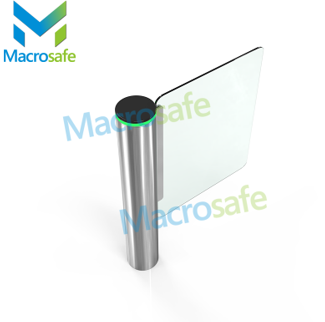Maintaining a secure working environment is of utmost importance in today’s world. Offices and workplaces house valuable assets, sensitive information, and a workforce that needs to feel safe and protected. Implementing comprehensive security guidelines is essential to ensure the safety of employees and to safeguard company assets. In this article, we will explore a range of measures and strategies that can be adopted to enhance office security and create a secure working environment.
Construction Turnstiles
When it comes to office security, one aspect that merits attention is the control of access points. Construction turnstiles offer a practical solution in managing access to specific areas within an office building. These turnstiles are designed to regulate the flow of individuals, allowing only authorized personnel to enter restricted areas. Construction turnstiles, with their sturdy construction and reliable functionality, provide an added layer of security by preventing unauthorized entry into sensitive areas such as server rooms, data centers, or executive offices.
Visitor Management Systems
An effective office security guideline is the implementation of a visitor management system. Visitor management systems allow for the accurate registration and tracking of visitors entering and exiting the premises. These systems typically involve the use of identification badges, visitor registration software, and electronic sign-in processes. By requiring visitors to sign in and wear visible identification badges, it becomes easier for employees to identify authorized personnel and detect any potential security breaches or unauthorized individuals within the premises.
Access Control Systems
Access control systems play a crucial role in maintaining office security. These systems include mechanisms such as key cards, biometric scanners, or PIN codes to grant or restrict access to different areas of the office. By implementing access control systems, businesses can ensure that only authorized individuals are granted entry to specific areas. Access control systems also provide a record of entry and exit times, enabling effective monitoring and enhancing the overall security of the office.
Security Personnel and Surveillance
Having trained security personnel present within the office premises can significantly enhance security. Security personnel act as a visual deterrent and can respond swiftly in case of emergency situations or security breaches. Additionally, the use of surveillance cameras placed strategically throughout the office building allows for continuous monitoring of activity, deterring potential intruders and providing valuable evidence in the event of any incidents. Surveillance cameras should be placed in key areas such as entrances, exits, parking lots, and high-value asset locations.
Employee Awareness and Training Programs
An essential component of comprehensive office security guidelines is educating and training employees about security protocols and best practices. Regular training sessions should be conducted to help employees recognize and respond appropriately to security threats or suspicious activities. This includes creating awareness about the importance of keeping personal belongings secure, reporting any security concerns, and following access control procedures diligently. By fostering a culture of security awareness among employees, the office environment becomes more vigilant and resilient against potential security risks.
Conclusion
In conclusion, implementing comprehensive security guidelines is crucial for ensuring the safety of office premises, employees, and valuable assets. This involves a range of measures, including the use of construction turnstiles, visitor management systems, access control systems, the presence of security personnel, surveillance systems, and employee awareness programs. By adopting these guidelines, businesses can create a secure working environment and instill confidence in their employees, ultimately contributing to the overall success and productivity of the organization.


